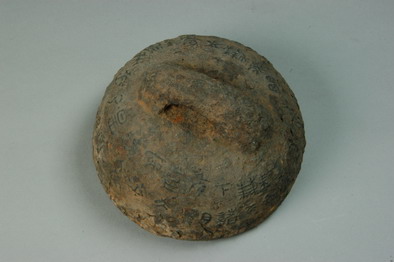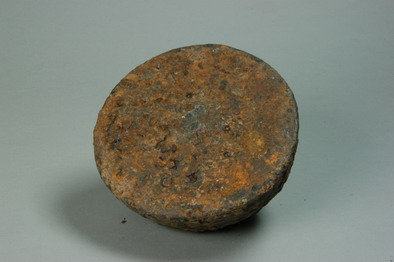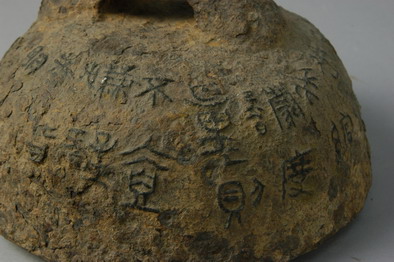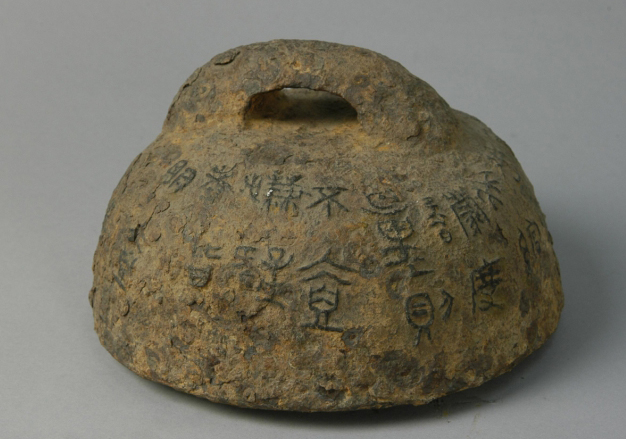The origin and development of weights and measures are closely linked with commodity exchange in the human history. In primitive times, the primitive methods of measurement could meet the needs of daily life. With the development of commerce and the complexity of economic life, not only was a standardized system of weights and measures needed, but also a unified standard should be gradually formed.
During the Spring and Autumn period, the standardization of measurement made some progress. Though undergoing an unprecedented development attributed to the great social changes and development in the Warring States period, Metrological system remained quite chaotic due to the political fragmentation.
In 221 BC, Qin Shihuang annexed the six eastern states one after another—Han, Zhao, Yan, Wei, Chu, and Qi—and brought an end to the Warring States period. Qin Shihuang then established an autocratic and centralized system. In order to unite the whole China as quickly as possible, Qin Shihuang took a series of measures to consolidate the regime’s power in political, economic and military affairs. One of the important measures that Qin Shihuang took was to unify the national system of weights and measures.
Qin Shihuang issued an order abolishing all the other conquered states’ weights and measures, and promulgated a national standard based on the weights and measures of the Shang Yang Reform Period. He issued standard weights such as the Qinjin; Qinjun; Qindan; etc., and enacted a system of regular annual inspection of all weights and measures throughout the country, making a great contribution to cleaning up the mess of weights and measures left over from all the states.
Weights and measures refer to the objects that measure length, volume and weight in daily life. The weights of the Qin Dynasty were all carefully designed and made by hand in batches. They are semi-spherical in shape, with a bridge-shaped knob. Generally, the diameter of bottom of the weights is longer than their height, making them stable. Except for the large weight (120 jin, in Qin’s measurement unit), which was made of iron, most of the weights were cast with bronze. Weights in the Qin Dynasty were mostly used as scale weight. Hence, Given the lifting handle was in the middle part of the balance bar, the balance scale is a precise one.
The monarchs of the Zhou Dynasty often issued the corresponding measuring instruments to the vassals when they enfeoffed them, consequently measuring instruments became a symbol of power. With more modern measuring instruments come into common use, the weight, pronounced “Quan”, literally, the power, as a kind of measuring instrument, become gradually declined, however, it increasingly adopt more connotations. Apart from a kind of measuring instrument, it is also the symbol of identity and social status, such as power, supremacy, rights, even tactics and trickery, etc. and its implications continue to influence China’s culture.
The existing archaeological texts and finds shows that not only are there large quantities of these weights, some of which survived over generations while some were unearthed, and all bearing Qin Shihuang’s edicts on the unification of weights and measures, but also that they covered broad regions of China.
Qin Shihuang’s 26th year’s iron weight inlaid with an edict in copper, was excavated in Zuoyun County of Shanxi Province. It is 19cm in height and weighs 32.5 kg. Conical in shape with a half-ring handle at its top, the weight bears an edict cast in copper on the side of its belly, which has 40 characters on Qin Shihuang’s 26th year’s edict on the unification of weights and measures. This weight was supposedly used by the local authorities to levy or distribute grain and fodder.
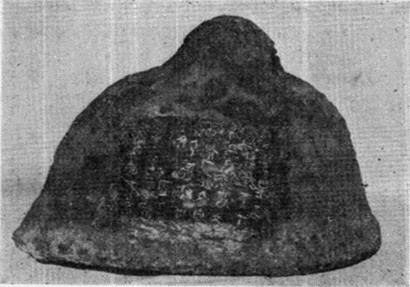
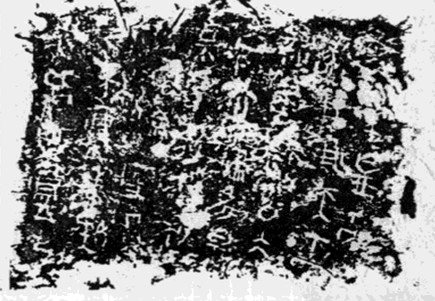
A Qin iron weight inlaid with an edict in copper was excavated from a tomb of the Qin Dynasty in Qin’an County of Gansu Province. It is 19cm in height and 25cm in its bottom diameter, and weighs 31.6 kg. It shapes like a steamed bun with a nose-shaped hoop handle at its top. A copper edict is inlaid on one side of the hoop handle, on which are engraved 40 intaglio seal characters. There is a metal added to the bottom of the iron weight due to lack of weight, a measure taken to check weight deviation.
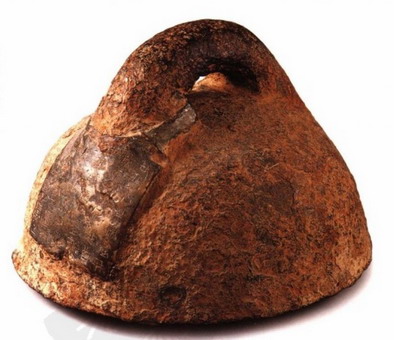
In 1973, a roughly intact Qin iron weight was discovered in an ancient site in Wendeng county of Shandong Province. It is 19.4 cm in height and weighs 32.257 kg. It is slightly oblate in shape and flat at the bottom, with a semicircular knob cast at its top. A piece of edict is inlaid on its side.
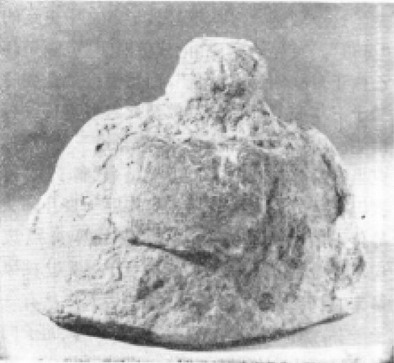
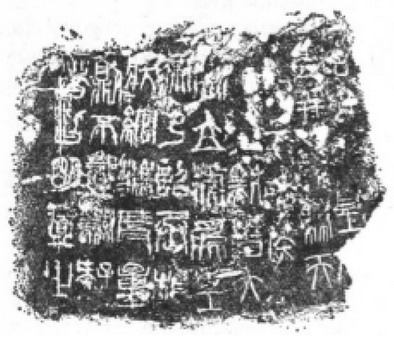
In 1976, a Qin iron weight was discovered intact in Chifeng county of Inner Mongolia. It is 17.1 cm in height and weighs 31.431 kg. It has a slightly flat top with an arched handle, and the outer fringe of the handle fits the weight which has a flat bottom.
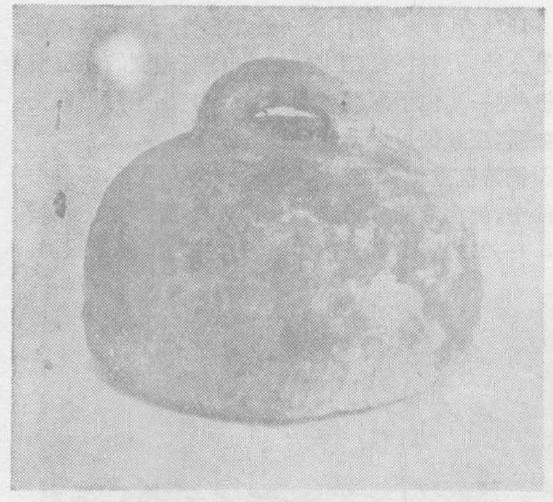

In 1977,two Qin weights were unearthed at Xiaozhuizishan production brigade, Longtoushan commune, Weichang County of Hebei Province. Both of them are ablate in shape with an arched handle at the top and a round foundry ingot at the lower part. They weigh 32.85 kg and 32.60 kg respectively. On their surfaces were engraved the 40 characters of Qin Shihuang’s 26th year’s edicts on the unification of weights and measures.
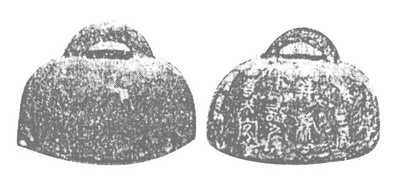
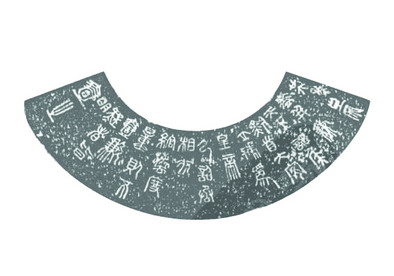
By comparing the above Qin iron weights discovered by archaeology, we can draw the following conclusions:
Firstly, the shapes of the Qin iron weights are mostly hemispherical with handles at the top for threading.
Secondly, most iron weights were inlaid with the Qinshihuang’s 26th year’s edict in copper, while this iron weight, which was unearthed in Baofeng county of Henan Province, was not inlaid with the edict in copper but directly cast in relief.
Thirdly, the texts of the edicts on the iron weights are identical, but there are differences in the seal character which is not literally da zhuan (big seal script), nor the xiao zhuan (small seal script) in the absolute form. And this just reflects that it was just during the early period of Qin Shihuang’s unification of China, and at that time the script was in the transitional period from chaos to the “standardizing script”.
Fourthly, all these iron weights are mainly used for local authorities to levy food and fodder, weighing “the crop”. It proved that the Qin Dynasty had unified the system of weights and measures in its vast territory.
Dear friend, do you know why the characters on some Qin weights were cast on its surface while others were engraved on the copper tablet?
Your answer please, if you have any questions or answer, please fell free to send us email, we are waiting for your answers and participation, and your comments, answers and suggestions will be highly appreciated. We will select and publicize the most appropriate answers and comments some time in the future.
Weekly Selection Email: meizhouyipin@chnmus.net
Xiao Zhuan
Xiao zhuan ( literally meaning Small Seal Script), also called qin zhuan ( or the Official Script of the Qin Dynasty) , is derived from da zhuan ( literally meaning Big Seal Script) by changing and omitting its strokes. It originated in the Qin state in the late Warring States period and was widely used in the Qin Dynasty and the early Western Han Dynasty. During the Warring States period, all the states didn’t have a unified script owing to the feudal separatism. Therefore, based on qin zhuan, Qin Shihuang began to unify the country’s script by implementing “standardizing script”. He abolished the various scripts used by the other six states which were different from those by the Qin state and invented a new style of calligraphy---xiao zhuan, by omitting and changing the inherent form adopted by the Qin state, absorbing some simplified folk scripts, vulgar scripts and standardizing them.
